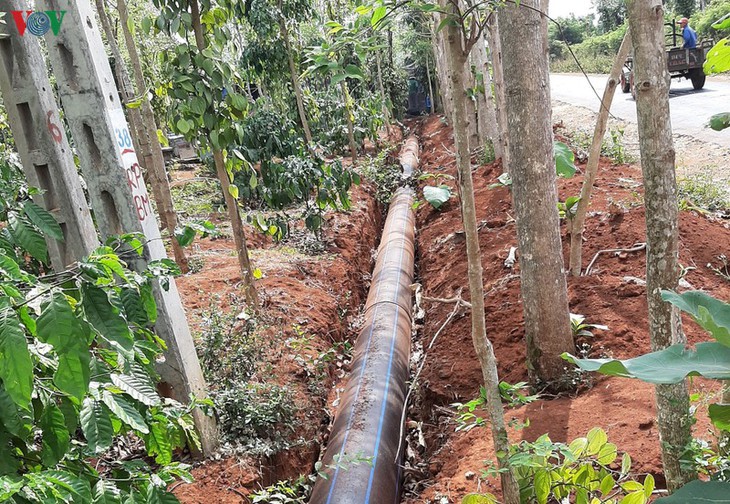Severe droughts in the Central Highlands have affected production and people’s lives. Localities have carried out measures to protect water resources and adapt to the situation.

A view of Sêrêpôk 3 reservoir from Ea Pô mountain (Photo: VOV)
Two effective solutions are pumping water up to the mountains and building water reservoirs and dams. In Cu Jut district, Dak Nong province, water is pumped from Sêrêpôk river to small reservoirs in the mountain. There are pipelines to carry water to farms at the foot of the mountain.
Dak Lak province has built pumping stations to pump water from reservoirs to overhead tanks from where water flows through pipelines to production areas.
Khuat Van Son of the Management Board of Dak Lak province’s transportation, agriculture, and rural development project said: “This model has two results. First people can use it for drop or mist irrigation systems to save water. It’s an automatic system so the operators can use a computer or smart phone to open or close valves. Water from reservoirs can water an area 5 times larger than in the past.”

A water pipeline crosses a pepper and rubber farm.
Dak Lak and Dak Nong province are implementing an ADB-funded water supply project to build overhead water tanks to water 2,600 ha of farms, mostly coffee and pepper. Dak Nong province will build dams on the Ea Dier river and reservoirs.
Le Trung Kien, Director of the Dak Nong provincial Water Resources Department, said: “The ADB project has two sub-projects in Dak Mil district and Cu Jut district. Based on its geography, the sub-project in Cu Jut district will build 10 dams.”
Upgrading and building irrigation networks are sustainable, effective measures to mitigate the impacts of droughts in the Central Highlands.
Ngoc Anh